Those things about coffee extraction extraction and extraction equilibrium
The reasonable extraction range was set by ebf, and the extraction results were tested by tds. Combined with the grinding scale and the ratio of gouache to powder to modify the results, it is the quality control system of most knowledge-based barista when making espresso. Under this seemingly rigorous operation process, will there be loopholes?-- extraction uniformity is a monitoring blind area that is easy to be ignored.
Uniform means that the quantity distributed or distributed in each part is the same. Combined with the extraction rate to understand the uniform extraction, that is, under the same extraction opportunity, all the coffee particles involved in the extraction get the same extraction rate. Based on the relationship between grinding and extraction in the previous article, we can use the following picture to illustrate the comparison:

As shown in the figure, the red frame is the 'perfect particle size' that can bring the best extraction performance. There is an equal amount of hot water in the two cups, and the "perfect particle size" particles are added to the left cup, and the uniform and appropriate extraction results will be obtained after 3 minutes, while the non-uniform and biased extraction results will be obtained by adding "wayward particle size" particles to the right cup. Will such a conclusion have any practical significance in daily operation?
Let's take a look at the repertoire of XOXO Little Theater today.
Since I heard that the quality of coffee can be tested by tds values, friends are no longer worried about making good coffee. In the bar, there can be no less concentration meter, table scale, thermometer, stopwatch and even calculator! tds reading and extraction rate conversion are handy for everyone. For a time, the world is in harmony, singing and dancing are peaceful.

One day, the strict boss used the consistent production standards in the store to produce fisher coffee gold manning for an old customer with Philharmonic pressure. Weighing, temperature measurement, timing, all the operation is like running water. Tds 1.25% extraction rate 20%, double stick! The boss, full of joy, watched the guests drink their coffee with smug eyes. A moment later, an unexpected comment made him ponder-- this coffee is not the same as that made by your master of technology.
Is it the guest's problem, or is there something wrong with the production? The tech gentlemen here may already have their own answers. Before we reveal it, let's start with the extraction rate of this cup of coffee and make some simple analysis. The extraction rate of coffee is 20%. In the most straightforward words, 20% of the ingredients in coffee are taken away by water. Suppose that 10g ground coffee is made up of 10000 particles of the same size. In that case, if each of them contributes 20% of its own, the total extraction rate can reach 20%; if the particles vary in size, 5000 larger particles contribute 15% of their own, and the other 5000 smaller particles contribute 25% of their own. The total extraction rate is 20% composed of insufficient extraction and extraction transition. At this point, the flavor of the coffee will become relatively negative. Because the concentration meter can only measure the tds of coffee liquid, but can not monitor the extraction degree of each coffee particle in the extraction process. Therefore, uneven extraction will lead to seemingly correct data, but there are hidden negative results.
The technologists are well aware of the relationship between particle size and extraction, so they will use screening to improve the consistency of particle size before each production. In the process, stir the soaked coffee. In the case of not changing the water temperature as much as possible, make each coffee get the same extraction opportunity as far as possible. In this way, a cup of coffee with correct data and correct flavor will be presented to the guests. The myth of the boss has also been solved!
Because of the fixed ratio of water to powder in immersion extraction, the problem of uneven extraction can be improved by a very simple method. However, if we enter the pass-through extraction process, due to the increase of uncontrollable factors in the whole process, screening may not be so effective.
So, in the production of espresso, what on earth affects the extraction uniformity? In the next article, I will start with the extraction environment and try to find out the answer.
If 18g ground coffee consists of 18000 particles with a diameter of 1mm, then the most primary structure of this "perfect environment" may be like this: a powder bowl with a diameter of about 15cm and a height of about 1mm, all coffee particles can be flattened, thus minimizing the loss in the extraction process. The brewer that matches this powder bowl has 18000 outlet points, which perfectly corresponds to the position of each particle in the powder bowl. Let's illustrate it with a picture like this:
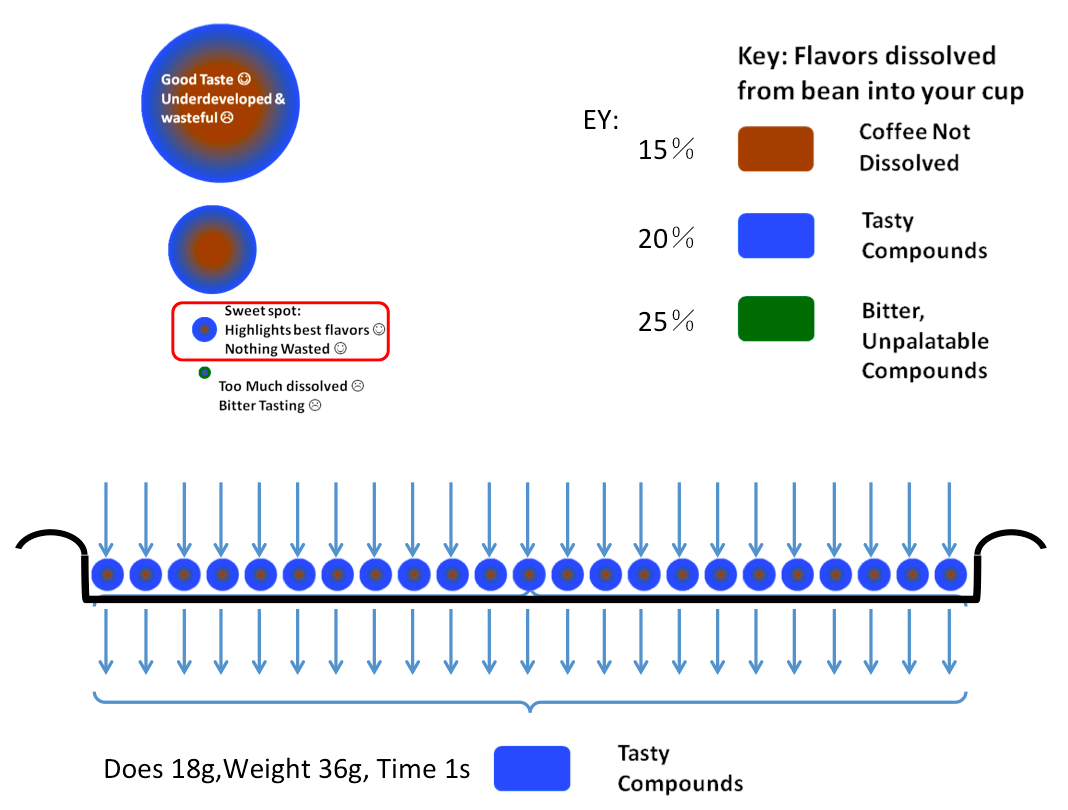
As shown in the figure, once the extraction starts, water at the same pressure and temperature acts on all coffee particles at the same time. Under this structure, the extraction time becomes very short. Assuming that 36g can be extracted in 1 second, then the red frame can bring the best particle size with an extraction rate of 20%. Since all the conditions are relatively consistent, this will be an almost absolute uniform extraction.
Of course, the above are all my own whimsical assumptions, and in reality there are no devices that can meet these conditions. As far as the results in the cup are concerned, we will not be able to make such an extraction attempt and make a horizontal comparison. Of course, if the equipment manufacturers can conduct relevant experiments and provide effective data, we will have a more direct and accurate answer to the question of uniform extraction and performance in the cup.
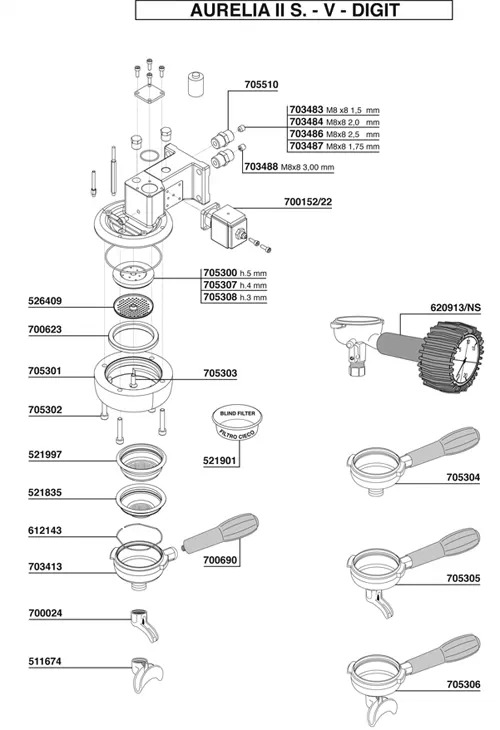
The courage to face reality is the key quality that a knowledge-based barista must have. Only by finding a solution to the problem from reality can we reflect the potential and determination of the new generation of coffee people. Let's just go back to reality and take the simonelli brand with high market penetration as an example to see where the problem lies. Most models of simonelli powder bowls are about 58mm in diameter and 25mm in height. When the powder bowl is filled with coffee, hot water permeates pressed powder from top to bottom during the extraction process. With the increase of the concentration of water, its washing power will become weaker.
Therefore, no matter how the particle size, the number of pores in the filter bowl and the extraction pressure change, when the extraction is finally completed, the extraction rate is composed of relative extraction deficiency and transition. We can improve the effluent consistency by changing the water distribution network, and we can also improve the water consistency by changing powder bowls, cloth powder, filling pressure and so on. But the uneven extraction process can not be changed.
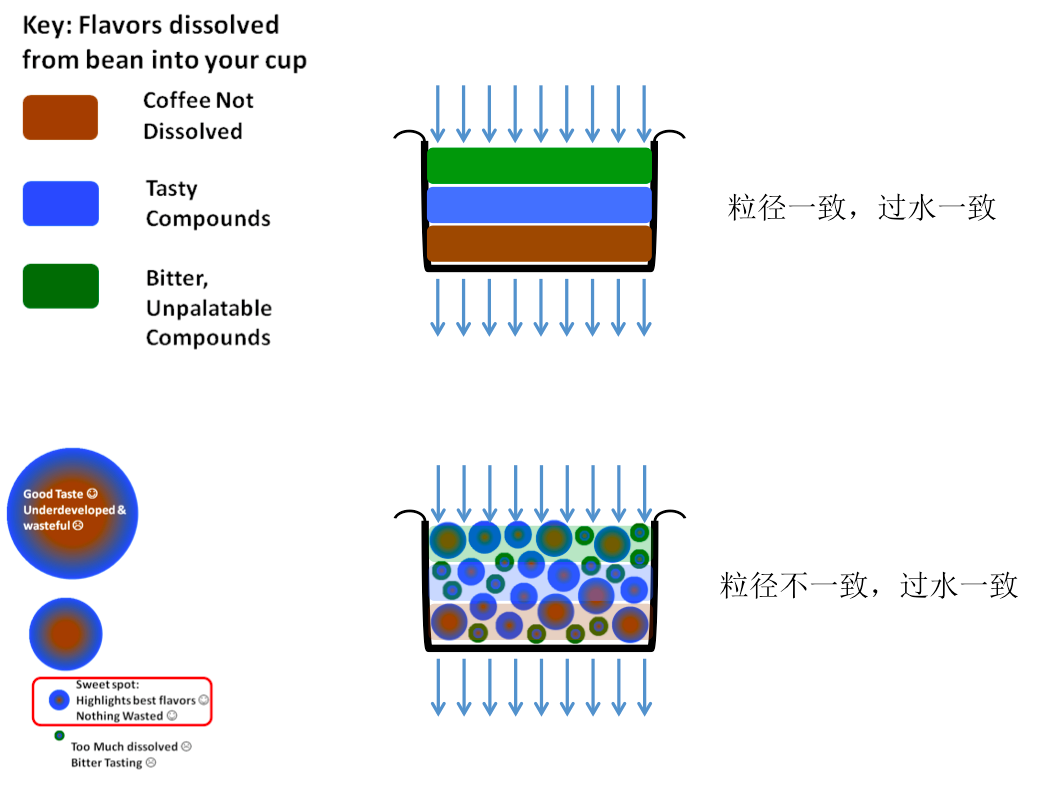
Different particle sizes bring different extraction rates, and a new flavor performance is formed by different extraction rates brought by different particle sizes. In this way, an extraction process that seems to be full of infinite unknown will become relatively purposeful and controllable. In other words, we can use different sizes of coffee to combine the extraction rates at will until we find the cup we want. Matt perger achieved his goal with the special particle size of ek43; Zhao Jiabao used sieving to make ek43 more accurate for its use. Although this may only be part of their whole extraction concept, from the point of view of particle size combination, they have taken the first step in practice and are ahead of their competitors.
Seeing here, the barista watching the competition may point out, if the method of particle size combination works so well, why didn't this year's wbc champion use it? From a technical point of view alone, this problem will be unsolved. Because, when the result is unknown, the method is not right or wrong, only different. If we want to draw a conclusion on this proposition, it can only be said that under the same competition purpose, everyone's different understanding of the game brings different ideas and methods.
Whether on the court or at the bar, as a barisa, there may be variables in everything but ourselves in the coffee-making process. The moment we pick up the handle, you can choose to believe in everything the existing conditions bring, or you can choose to believe in your own guesses about the unknown. As a result, it should be handed over to each guest who raises the cup for evaluation.
Important Notice :
前街咖啡 FrontStreet Coffee has moved to new addredd:
FrontStreet Coffee Address: 315,Donghua East Road,GuangZhou
Tel:020 38364473
- Prev
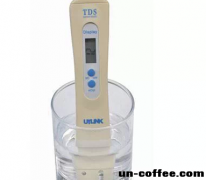
Explanation of the nouns related to coffee extraction
30% of the ingredients in coffee beans are soluble, and these 30% contain organic substances that provide aroma and taste. These organic substances contain all the good and bad properties, so it is not that the higher the extraction rate, the better the taste and aroma. In addition, a moderate concentration is an important factor that can not be ignored for the overall taste. (1) the method of concentration determination
- Next
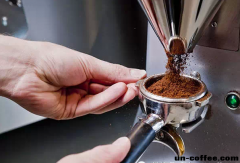
Those things about coffee extraction espresso extraction and correction
(1) EBF is getting more and more attention in the boutique coffee industry today, coffee extraction rate as an objective and real data, its impact on the performance of the cup has been recognized by most knowledge-based baritsa. Under this premise, it means that we can combine the variables that affect the extraction rate and analyze in depth how to achieve proper extraction by modifying the extraction rate.
Related
- Beginners will see the "Coffee pull flower" guide!
- What is the difference between ice blog purified milk and ordinary milk coffee?
- Why is the Philippines the largest producer of crops in Liberia?
- For coffee extraction, should the fine powder be retained?
- How does extracted espresso fill pressed powder? How much strength does it take to press the powder?
- How to make jasmine cold extract coffee? Is the jasmine + latte good?
- Will this little toy really make the coffee taste better? How does Lily Drip affect coffee extraction?
- Will the action of slapping the filter cup also affect coffee extraction?
- What's the difference between powder-to-water ratio and powder-to-liquid ratio?
- What is the Ethiopian local species? What does it have to do with Heirloom native species?

